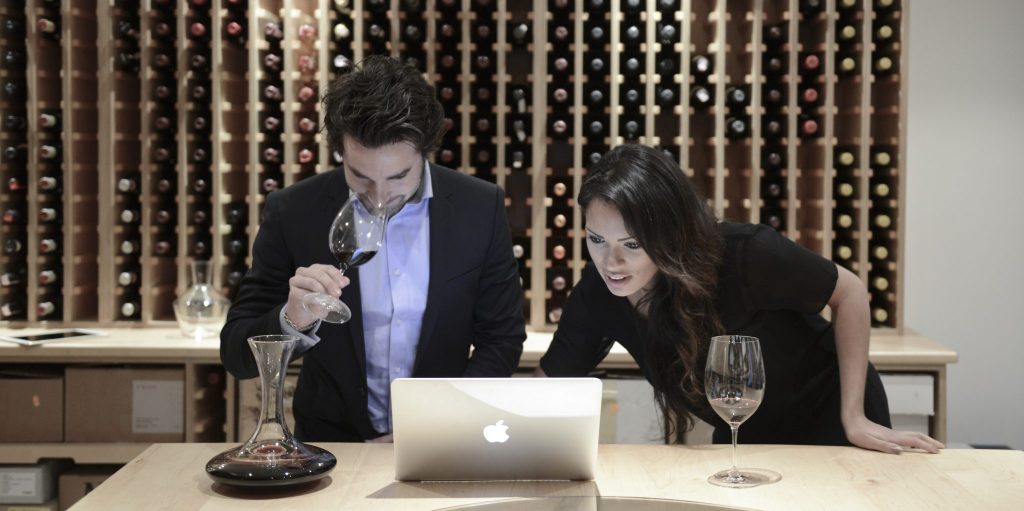The account management model that delivers personal service isn’t scalable. There are probably thousands of transactions in your database relating to big buyers who spend very little with you. There is a world of opportunity that requires your engagement with customers who you don’t know very well. The following post discusses how to build a customer relationship management strategy and what sort of initiatives wine tech can help with.
How many emails with merchant offers do you imagine your clients receive every day?
I counted 36 emails the other day from 24 retailers, which admittedly is in the midst of the 2018 en primeur Bordeaux season, but if I’m getting that many as a dyed-in-the-wool collectors of long standing, so have many other of your top customers.
Part of the trouble lies with your customers.
We are a fickle lot; flitting here and there in search of those precious allocations and finds (Burgundy, Piedmont, rare Rhones, ancient Riojas and cult Californian). If not searching for scarce gems, we’re comparing prices of classified Bordeaux and expecting to buy at the best market price.
The account management model that delivers personal service and pre-empts an avid collector’s every move is expensive and barely touches the sides of the glass for the largest proportion of your customers – the 97% with whom you can’t hope to build a relationship.
Your biggest customers are clear-cut – they buy the most from you (until one day maybe they don’t). But there are thousands of transactions in your database relating to huge buyers who spend very little with you. Where are the clues? Perhaps in the nature of what they once bought; was it ready to drink or for laying down? Did it get delivered out to someone else’s storage service?
So it’s pretty obvious that there is a world of opportunity that requires your engagement with customers you don’t know very well, and equally obvious an account management model won’t cut it if you want an unfair, whopping slice of the pie.
So how do you engage with them? Sending more emails probably won’t change the dynamic. Remember how many they are getting daily from your competitors?
However you do it, the starting point is to build a customer relationship management strategy, for example:
- Envision a future that fits with your core values and your customer needs
- Build a promise around added value
- Make it actionable
So what sort of things can wine tech help you do to put you in pole position, and provide an effective framework to execute your value-based, customer-centric business proposition?
- What could be more attractive than a supplier who demonstrates they want to get to know their customer? That means finding out about what they like and what they own.
- Connect the databases that are core to your business. If your inventory is in storage, and you’re periodically updating from CSV files into spread sheets, and rekeying into your website, you will make mistakes. Disappointment is corrosive to customer relationships.
- By the way, don’t just join it up, bring it all to life too! That means inject your wine list with rich content and information that will inform and enthuse your customers.
- Fine out what your customers think, and record those preferences so you can make them actionable.
- Provide them the means to re-engage with the wines they’ve bought with you.
- Invite them to catalogue other wines they have stored elsewhere or at home so they can see can a 360 degree view – but so can you – what could be better? Now you have a full picture of every customer.
- Show them current values, drinking windows, critics reviews, other wines from the same region or commune, enable them to see what their collection looks like in the round.
- Provide them a means to sell their wines if they want to, whether our trading exchange, your e-commerce or brokerage list, or auction.
- Make it transparent: your customers will love it if you put them in control and give them the ability to draw their own insights and conclusions.
- Understand why they want to sell and build a plan to restock, reshape or simply make it the most satisfying and informed process ever.
- Customers hate it when a wine goes on a brokerage or consigned list, doesn’t sell, and they don’t hear anything or get any meaningful updates. Just showing them a statement that a wine of theirs is still for sale (and by implication isn’t in demand or is worth less than you suggested) is not meaningful communication!
- Make it easy and convenient. Did you know most wine collectors will pay a premium for convenience? That means making it simple to do the things they want to do (and you want to help them to do).
So can you afford to do it?
Only you can do the math!
Figure out the value of a typical customer over 1, 2 and 3 years. Think about how many you’re going to reactivate, what proportion will spend more than before, how many you’ll now retain as customers who may have left, and the income arising from winning new ones over with the package of promises on offer.
Now, don’t go and try to do it all yourself from scratch, or because the software house down the road has told you how little they can do it for. Don’t believe them! The road to hell is paved with best intentions, but they can hurt your business.
Bending generic business systems into shape for your wine business will take longer, is riddled with necessary compromise and will cost you a lot more than the budget set aside. Software should not dictate the future of your business, that’s your job. It should be there to make you and customers happy and fulfilled.
Read more: Solutions for wine merchants
